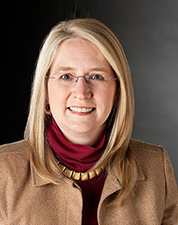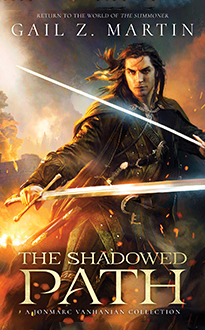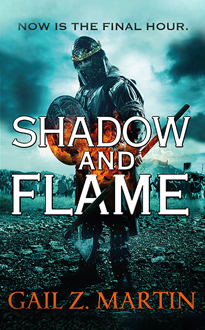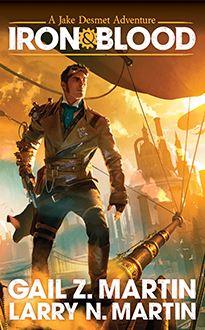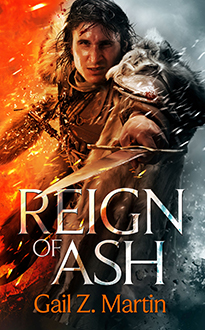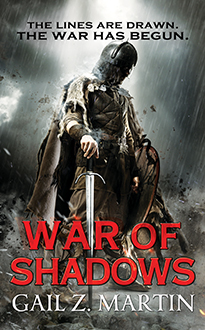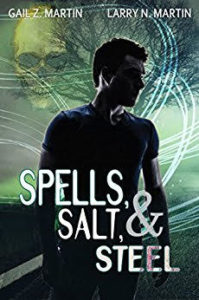by Gail Z. Martin
Epic fantasy is medieval, full of sweeping battles, world-altering conspiracies, and the rise and fall of kingdoms and civilizations, reminiscent of real history and yet altered. Urban fantasy brings the supernatural into something akin to our own world, recognizable and familiar but with key–dangerous–differences.
Magic is the most important of those differences and alterations. But while magic is present in both urban and epic fantasy, the magical systems, its invocation and use are often handled differently, and its practitioners treated differently between the two types of fantasy. Those differences are a key part of the world building, and the treatment of magic helps to define both the world and the characters.
Think about magic in an epic fantasy setting, and most people picture a wizard like Gandalf–robed, larger than life, with wild hair and a staff, casting lightning bolts and working spells. Part of that draws on the medieval setting. Lots of people wore what we would now call ‘robes’, especially if they held a priestly or expert role–like a wizard, who was scholar, alchemist and mage, perhaps even a conduit for divine power.
Magic in epic fantasy is heavily liturgical, couched in elaborate spells and rituals with powerful relics and arcane materials. Grounded in a time when science was alchemy and superstition rivaled rationality, epic fantasy magic feels grand and elaborate. Magic might have been frowned upon by religious authorities, feared by kings, or sought by devotees, but it was not alien to the understanding of how the world functioned, was not antithetical to the foundations of the wide-spread belief systems. Magic in epic fantasy might be rare or common, hidden or openly practiced, but its existence was not unbelievable, nor did the possibility of it seem counterintuitive to the people of the time. For medieval thinkers, it wasn’t a stretch to believe magic was possible; they questioned whether it ran counter to morality and divine decree.
Magic in urban fantasy still has aspects of mystery, ritual and lore. After all, magic and the supernatural are all about the boundary with the unknown and the hidden. Yet in urban fantasy, the people wielding the power are our contemporaries, products of the modern world, as much a product of science and culture as the reader and the author. Using magic for a modern practitioner requires being able to set aside contemporary presuppositions about what is and isn’t ‘real’ or possible. It’s less of a religious objection than a scientific one, the sense that it shouldn’t be possible to set aside or alter the laws of physics. Invoking magic in urban fantasy may draw on ritual, relics and lore but those elements are handled through the lens of modern rationality, not superstition.
And for the record, magic in a steampunk world draws on the Victorian sensibility that everything was ultimately knowable, and that science could conquer everything–even the supernatural, or at least explain it and reduce it to a knowable system.
I write epic fantasy, urban fantasy and steampunk. The magic is different among the genres in important ways, and yet much about the power and its use and costs remains similar.
In my Chronicles of the Necromancer/Fallen Kings Cycle epic fantasy series, necromancy and blood magic are two ends of a spectrum separated by the ethics and intentions of the practitioner. The magic of the nomadic Sworn is shamanistic, while the Nargi priests attribute their magic to their dedication to the Crone aspect of the Sacred Lady and are sure all other magic is infernal. Magic is a force of nature that some people can tap into and control. It is known and accepted, but most people do not have any ability, and necromancy is the rarest magic of all.
In the Ascendant Kingdoms Saga epic fantasy series, a devastating war destroys two kingdoms and knocks out the artificially-imposed control over magic, leading to massive destruction as wild magic causes deadly storms and opens portals for monsters to come through from other realms. The loss of the ability to control magic in a magic-dependent culture where most people have at least a little talent wrecks havoc on an everyday scale as well. Hero Blaine McFadden must not only gain military control to regain order, but also reimpose the binding on magic to save his people.
Switch to my dark urban fantasy series, Deadly Curiosities, and modern-day Charleston, South Carolina is a hot spot for supernatural perils. I draw on a variety of magical traditions including Voodoo, Hoodoo, Native American, old Norse and European magic, with a main character who can read objects by touch and supporting characters with a variety of supernatural abilities. It’s our world, with a twist, and the characters believe in the supernatural because they have seen and experienced its reality. Ritual and lore are often part of focusing concentration and harnessing power, but magic is not superstitious or necessarily an issue of religious faith; it is grounded in its own rules and systems.
And then there’s the Steampunk series, Iron & Blood, with the ever-optimistic Victorians who relish exploring the unexplained. Science and magic are at odds as the old ways and the new sensibilities vie for dominance, but beneath it all is Victorian rationality, the belief that the truth is out there. Inventors like Edison create machines to record the voices of the dead, while Nikola Tesla harnesses energy in ways that put wizard lightning to shame. It’s a brave new world, but it straddles both old and new ways of thinking, and the tension between those realities is part of the fun.

